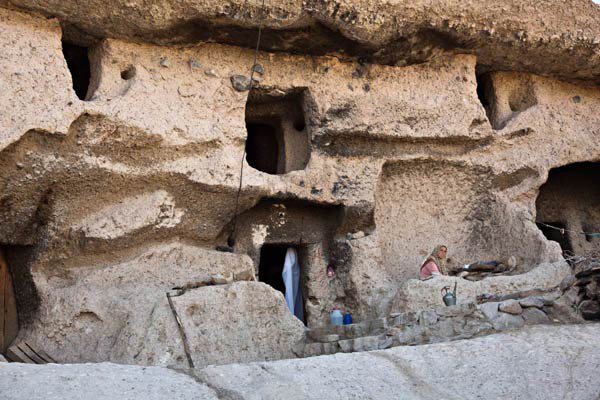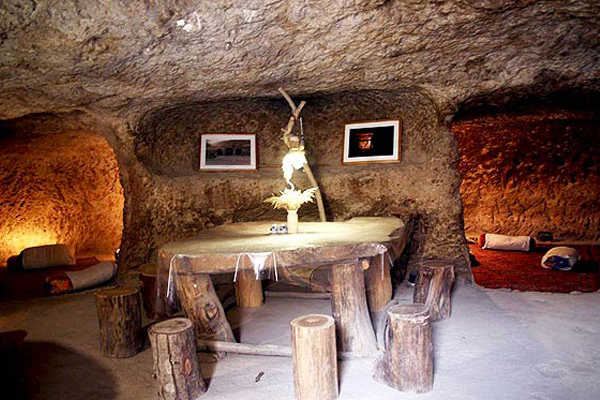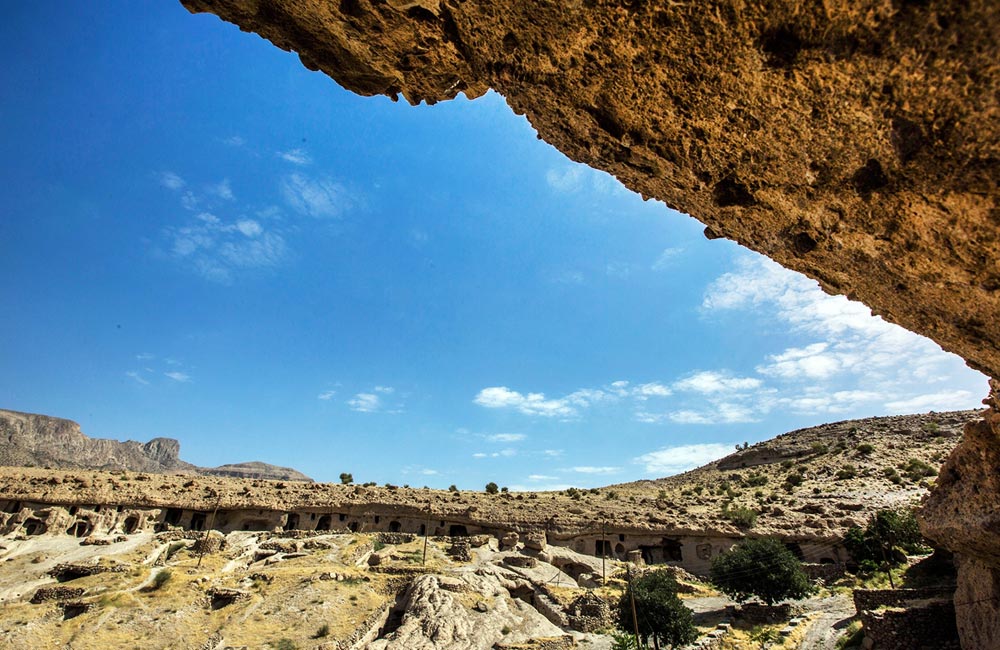One of the seldom remaining corners of the world that is still the home to semi-nomadic people, the ancient village of Meymand is a relatively self-contained habitat in the valley of Iran’s central mountains, in the province of Kerman. Truly a place of wonder, the villagers have a very unique and interesting lifestyle that changes with the turning of the season. During spring and autumn, they live in temporary pastures located on the mountains where they raise their animals. From the end of winter to late spring, they live in settlements called Sar-e-Āghol. Two types of houses exist in this area; the first goes by the name markhāneh. These are semi-underground circular houses are half made of dry stone walls with wood and thatch roof covering. The second type of house is called Mashkdān.


These structures are above ground and are made of dry stone walls with cone wood roofs made of branches. Some of these rare buildings are made for livestock and vaulted stone roofs. In winter, they move down to the valley, where they live in caves that have been carved out of the soft mountain rocks (kamar). For a desert environment, this type of housing is very unusual. During the summer and early autumn, they move to a settlement called sar-e-bāgh near seasonal rivers. These summer houses are made of dry stone walls and the roofing is a simple grid of timber covered with grass thatch. The Meymand villagers are considered to be agro-pastoralists, meaning that they depend on growing crops as well as raising livestock to survive. Since the climate is extremely arid and rarely witnesses rain, every drop is collected and channeled through underground canals (qanāt). This water is then later used for feeding livestock, watering orchard and growing vegetable gardens. Reflected within their social, cultural and religious beliefs and practices, the Meymand people have a very close bond with nature and the natural environment. As of very recently, July 2015, this village has become an official UNESCO registered world heritage site.
City/Town: Meymand / Kerman
Address: Meymand Village, Meymand Roadway, Kerman


